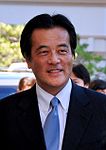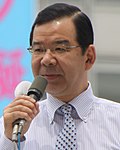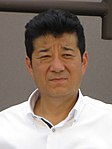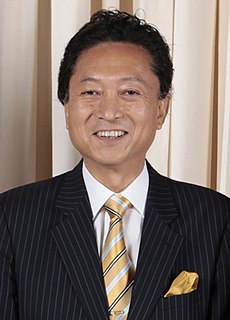| |||||||||||||||||||||||||||||||||||||||||||||||||||||||||||||||||||||||||||||||||||||||||||||||||||||||||||||||||||||||
121 (of the 242) seats in the House of Councillors 122 seats needed for a majority | |||||||||||||||||||||||||||||||||||||||||||||||||||||||||||||||||||||||||||||||||||||||||||||||||||||||||||||||||||||||
|---|---|---|---|---|---|---|---|---|---|---|---|---|---|---|---|---|---|---|---|---|---|---|---|---|---|---|---|---|---|---|---|---|---|---|---|---|---|---|---|---|---|---|---|---|---|---|---|---|---|---|---|---|---|---|---|---|---|---|---|---|---|---|---|---|---|---|---|---|---|---|---|---|---|---|---|---|---|---|---|---|---|---|---|---|---|---|---|---|---|---|---|---|---|---|---|---|---|---|---|---|---|---|---|---|---|---|---|---|---|---|---|---|---|---|---|---|---|---|---|
| |||||||||||||||||||||||||||||||||||||||||||||||||||||||||||||||||||||||||||||||||||||||||||||||||||||||||||||||||||||||
 | |||||||||||||||||||||||||||||||||||||||||||||||||||||||||||||||||||||||||||||||||||||||||||||||||||||||||||||||||||||||
| |||||||||||||||||||||||||||||||||||||||||||||||||||||||||||||||||||||||||||||||||||||||||||||||||||||||||||||||||||||||
The 24th regular election of members of the House of Councillors (dai-nijūyon-kai Sangiin giin tsūjō senkyo, 第24回参議院議員通常選挙) was held on Sunday 10 July 2016 to elect 121 of the 242 members of the House of Councillors, the upper house of the 717-member bicameral National Diet of Japan, for a term of six years. As a result of the election, the LDP/Komeito coalition gained ten seats for a total of 146 (60.3% of all seats in the house), the largest coalition achieved since the size of the house was set at 242 seats. [1]

The House of Councillors is the upper house of the National Diet of Japan. The House of Representatives is the lower house. The House of Councillors is the successor to the pre-war House of Peers. If the two houses disagree on matters of the budget, treaties, or designation of the prime minister, the House of Representatives can insist on its decision. In other decisions, the House of Representatives can override a vote of the House of Councillors only by a two-thirds majority of members present.
An upper house is one of two chambers of a bicameral legislature, the other chamber being the lower house. The house formally designated as the upper house is usually smaller and often has more restricted power than the lower house. Examples of upper houses in countries include the Australian Senate, Brazil's Senado Federal, the Canadian Senate, France's Sénat, Germany's Bundesrat, India's Rajya Sabha, Ireland's Seanad, Malaysia's Dewan Negara, the Netherlands' Eerste Kamer, Pakistan's Senate of Pakistan, Russia's Federation Council, Switzerland's Council of States, United Kingdom's House of Lords and the United States Senate.

The National Diet is Japan's bicameral legislature. It is composed of a lower house called the House of Representatives, and an upper house, called the House of Councillors. Both houses of the Diet are directly elected under parallel voting systems. In addition to passing laws, the Diet is formally responsible for selecting the Prime Minister. The Diet was first convened as the Imperial Diet in 1889 as a result of adopting the Meiji Constitution. The Diet took its current form in 1947 upon the adoption of the post-war constitution, which considers it the highest organ of state power. The National Diet Building is in Nagatachō, Chiyoda, Tokyo.
Contents
- Background
- Pre-election composition
- Policy effects
- District reapportionment
- Opinion Polls
- Notable results
- Results
- Results by electoral district
- References
- External links
76 members were elected by single non-transferable vote (SNTV)/First-past-the-post (FPTP) voting in 45 multi- and single-member prefectural electoral districts; for the first time, there were two combined (gōku) single-member districts consisting of two prefectures each, Tottori-Shimane and Tokushima-Kōchi. This change and several other reapportionments were part of an electoral reform law passed by the Diet in July 2015 designed to reduce the maximum ratio of malapportionment in the House of Councillors below 3. [2] [3] The nationwide district which elects 48 members by D'Hondt proportional representation with most open lists remained unchanged.
Single non-transferable vote or SNTV is an electoral system used in multi-member constituency elections.
The Tottori-Shimane at-large district is a constituency of the House of Councillors in the Diet of Japan. It was formed pursuant to a 2015 revision of the Public Officers Election Law from a merger of the Tottori and Shimane at-large districts, the two smallest districts in the country, to address the imbalance in representation between rural and urban voters. The district has 1,068,348 registered voters and was contested for the first time at the House of Councillors election that was held on 10 July 2016.
The Tokushima-Kochi at-large district is a constituency of the House of Councillors in the Diet of Japan. The district was formed in 2015 from a merger of the Tokushima and Kōchi at-large districts. Liberal Democratic Party member Yusuke Nakanishi was elected as its first representative at the House of Councillors election in July 2016.
This election was the first national election since the 2015 change to the Public Offices Election Act allowed minors from 18 years of age to vote in national, prefectural and municipal elections and in referendums. [4]
















